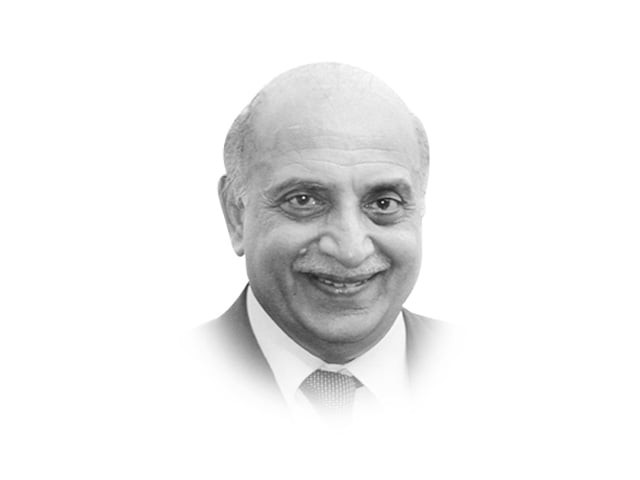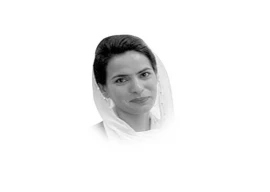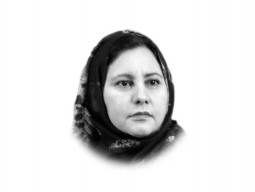
Salam had already become famous in British India as a very young record-breaking student from Jhang, where he grew up, when he arrived at Government College, Lahore in 1942 as a bachelor’s student. At Government College, too, he continued his record-breaking streak in every major exam and passed out with a Master’s in mathematics in 1946.
Salam arrived at Cambridge as a student of Tripos mathematics in September, 1946 with a three-year scholarship. He completed his mathematics Tripos in two years with a first class. His teacher, Fred Hoyle, one of the most renowned astrophysicists of the 20th century, advised him to do the two-year physics Tripos in one year “as a challenge”. A few others had achieved this feat, after having done a math Tripos in first class. The list included two Nobel laureates — Sir GP Thomson, the grandfather of the present British High commissioner to Pakistan, and Sir Nevil Mott. However, both had secured a second class in the physics Tripos. The challenge was to secure a double first class. Salam was, to the utter surprise of some of his teachers, able to secure a first class in the physics Tripos as well, while completing it in one year. This was a most unusual achievement.
As a student of mathematics Tripos, Salam was influenced by Dirac, a theoretical physicist who came to occupy Newton’s chair at the age of 30, and whom Salam ranked above Einstein. He therefore decided to go do a PhD in physics. He was assigned to Nicholas Kemmer, who already had eight PhD students and had his hands full. However, he was told that Salam was better than all of those whom Kemmer was already supervising. Since Kemmer did not want another research student, he suggested that Salam go to Birmingham to work with Professor Rudolf Peierls. Salam was reluctant to leave Cambridge and so an understanding was reached that Kemmer would supervise Salam “peripherally”. Kemmer told Salam that all problems in Quantum Field Theory, the area in which Salam wanted to work, had already been solved by his outstanding student PT Matthews. He asked Salam to go to Matthews in case he had any problems left.
When Salam asked Matthews if he had any “crumbs” left, the latter gave him a problem on the agreement that if Salam failed to solve it in six months he would take the problem back. Matthews was writing up his thesis and had already become famous on account of his outstanding work. Matthews gave Salam a very difficult problem that he had not been able to solve. It was technically known as the problem of overlapping infinities in meson theory, which dealt with strong nuclear force and pertained to an area within Quantum Field Theory known as Renormalisation Theory. In the electromagnetic theory (known as QED – Quantum Electrodynamics) a similar problem had been encountered and the very young Dyson at Birmingham had contended that the problem could be solved in QED. So Salam phoned Dyson for help in the matter. As Dyson was leaving for Einstein’s institute at Princeton the following day, Salam travelled to Birmingham that very day and travelled back to London with Dyson the next morning. On the train the two discussed the problem. Dyson told Salam that he had only conjectured that the problem of overlapping infinities could be solved but had no proof! However, he did tell Salam the basis of his conjecture on the train.
Salam later wrote: “At Cambridge, amid the summer roses at the backs of the Colleges, I went back to the overlapping infinity problem to keep tryst with Matthews’s deadline. Using a generalisation of Dyson’s remarks I was able to show that spin-zero meson theories were indeed renormalisable to all orders. At that time transatlantic phone calls had not been invented. So I had vigorous correspondence with Dyson, with the fullest participation of Kemmer, my supervisor.” Within three months Salam had solved a problem whose solution had eluded the great Matthews and the great Dyson. The area was so difficult that Professor Kemmer, himself a leader in the subject, was compelled to write: “… some of the details are to this day too complicated for me to follow, at least in the time I have hitherto been able to spare for it…Today I feel I am much more Salam’s pupil than his teacher.”
Matthews, too, was astonished at Salam’s success. Based on the problem he gave Salam, he had chalked out a program for his post-doctoral work for an entire year at Princeton, but, as he told Kemmer “this chap Salam” has already solved the problem! Professor Bambah, who arrived at Cambridge in 1948, knew Salam from Government College. When he was going to Princeton in 1950, Salam asked him to tell Dyson that he had solved the problem of overlapping infinities. Dyson said to Bambah: “I don’t believe it, but if he has done so he will be very famous.”
When Bambah told Dyson that Salam had picked up the problem on account of a suggestion in his own work, Dyson said: “I had said that it should be done and not that it could be done.” Dyson was right — Salam was immediately catapulted to fame among researchers in the world of physics and he was just 24 at that time. In 1950 the world of physics had six young leaders with ages ranging between 24 and 32 years. These were Feynman (1918-1988) and Schwinger (1918-1994) in the US, Matthews (1919-1987), Salam (1926-1996) and Ward (1924-2000) in Britain and Dyson (born 1923) who grew up in the UK and worked at both, Birmingham, UK and Princeton, US. Three of them won the Nobel Prize, Feynman and Schwinger being the other two. Salam never looked back and continued making contributions of the highest order throughout his career.
Published in The Express Tribune, February 1st, 2011.















COMMENTS
Comments are moderated and generally will be posted if they are on-topic and not abusive.
For more information, please see our Comments FAQ